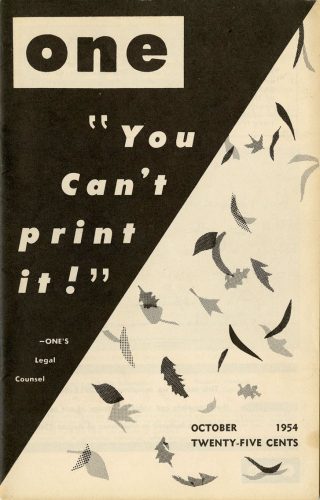When One: The Homosexual Magazine began to send its fledgling, pro-gay publication through the mail in 1953, it ran into trouble. The U.S. Post Office called the publication obscene and banned it from being mailed.
One sued. While lower courts turned down its case, the U.S. Supreme Court took it on in 1958, lifting the ban one One's distribution. It was a victory for the First Amendment right to free speech—and for One, which could now spread the message of a tiny but growing gay rights movement.
It would be 28 years before the Supreme Court would again hear a case on gay rights.
